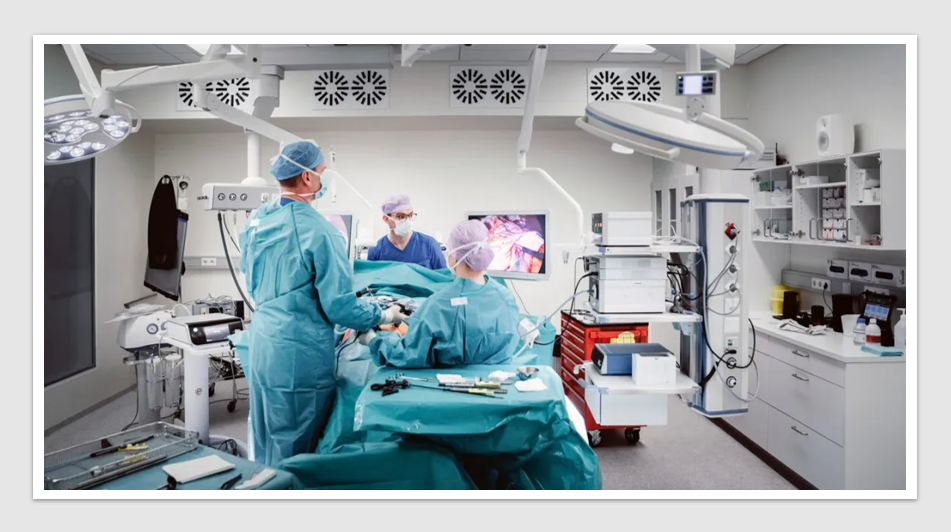Communication
5 Ways to Help Your Team Be Open to Change
More than 90% of CEOs believe their companies will change more in the next five years than they did in the last five. Having a workforce that’s ready and able to harness that change will make the difference between success and failure.
Leaders at every level need to embrace and model how to engage in and affect change. Personal leadership and engagement, however, is not enough. For change to be operationalised, you need to inspire your team to be creative and enable them to innovate. But innovation only happens when people are able to work in the gray space — where ambiguity is okay and business principles, rather than hard and fast rules, apply.
Here are five daily practices you can put in place to inspire and enable your team to become change makers:
Tell stories about others who moved beyond the status quo. Asking people to work in the gray space often creates uncertainty. They need reassurance that moving into uncertainty can create positive results. Success stories provide tangible, memorable examples of what moving beyond the status quo looks like. To craft a compelling story, ask yourself:
- What is meaningful and important to the people I’m working with now?
- What is the core idea I want them to take away?
- What essential parts of the story invite them to come along on the journey?
Create dialogue, inviting others to ask questions and share emotions, experiences, and insights. Change stirs up emotional responses that often cause people to pull back rather than to lean in. Inspiring and enabling your team to affect change requires having conversations that move people from reaction to action. Try having 30-minute meetings to discuss both the emotions related to change and the actions participants can take to affect change. These are called “listening posts.” Listening posts were originally facilities that monitored radio and microwave signals to analyse their content. Like that original definition, your listening post can help you understand key information, and can help others take action. Listening posts consist of:
- Table setting: Define the purpose of the meeting for your team. Encourage them to discuss how change is affecting them. For example, “We’re here to talk about the change we are experiencing and understand how it’s impacting you personally and us as a team.” Invite everyone to define actions that the group will take to influence how change is happening.
- Listening: Encourage individuals to start the conversation by sharing their experiences by using metaphors or adjectives. This gives them a safe way to talk about emotions. Share your metaphor first to break the ice. For example, you may feel like a juggler trying to keep all the balls in the air. Share that with your team. As people share their metaphors, remember to listen for who is dissenting or significantly challenged by the change. The voice of the outlier can provide key insights.
- Consolidating: Ask the team what common themes they are hearing. Use questions like, “What does it seem like we all have in common? What is different for each of us?” Summarise key themes and confirm what you’ve heard.
Acting: Identify actions. These ideas need to come from the team, with you as the facilitator. Ask questions like, “What do we control or can we influence?” “How do we want to change this?” “What role will each of you play in making this happen?”
Ask “what if?” questions in one-on-one and team meetings. This is your opportunity to help your team be bold. Don’t ask what-ifs that only look at slightly different solutions or behaviours. Role model testing the boundaries — what are the guardrails and how can you push up against them? Questions like “What if we were all freelancers? How would we think about this?” “What if we built this process from scratch?” or “What if our lead product suddenly became obsolete?” push people to think boldly. People may be unsure just how far they can push at first. Recognise and reward initial steps and continue to ask for more. Reinforce ideas by saying “That’s a great idea. Let’s push that idea even further.” Or “That’s a good start. We need to be asking ourselves these questions continually.” This will reinforce the message that being a change-maker should be the norm, not the exception.
Set expectations that everyone (including yourself) should acknowledge, and take responsibilities for mistakes. And then, treat mistakes as opportunities for learning and growth. Michael Alter, former president at Sure Payroll, made making and acknowledging mistakes a core to operationalizing their business strategy. When he joined the company, he needed employees to become change-makers and take more risks to meet accelerated growth goals. After trying personal stories, analogies, and other techniques without enough success, he formalized failure. He created the “Best New Mistakes” competition, rewarding employees for providing the most unique and interesting mistakes. Rules included that employees could only nominate themselves and it had to be a new mistake. Entries were discussed, and prizes were given at company meetings. Six years later, it was still one of their most innovative learning initiatives.
Champion cross-functional collaboration and networks to open up thinking and gain new perspectives. To become change makers, your team needs to hear a variety of voices and get a variety of perspectives. Urge them to work across boundaries by asking questions like:
- Who else do we need to involve?
- What other parts of the organisation could help with this?
- Who has perspective on this topic/issue/area that we don’t or can’t have?
- How should we connect with them?
- What can I do to help create that connection?
Organisations that succeed are no longer the ones that change top-down, or where innovation is expected only from certain people or roles. Winning teams build change agility into the heart of their culture. That’s why change leadership is no longer just something you do. It’s a large part of who you are. And that means building “change muscle memory” in yourself and your teams.
Source: https://hbr.org/2019/04/5-ways-to-help-your-team-be-open-to-change?utm_medium=email&utm_source=newsletter_daily&utm_campaign=dailyalert_not_activesubs&referral=00563&deliveryName=DM32917
News & Trends - MedTech & Diagnostics

Bariatric surgery trumps Novo Nordisk’s Wegovy in cost-effectiveness and durability
MedTech & Diagnostics News: Bariatric surgery emerges as cost-effective, boasting superior and enduring weight loss outcomes over a five-year span […]
MoreNews & Trends - Pharmaceuticals

Aussie digital health company hits new milestone in AstraZeneca partnership
Pharma News: Fewer than 50% of asthma patients adhere to their prescribed preventative medications. An Australian digital health company has […]
MoreDigital & Innovation

Medical drone to reduce health equity gaps in rural and remote Australia
A specialised medical drone which increases accessibility to essential health services such as pathology, medicines, and telehealth services in rural […]
More